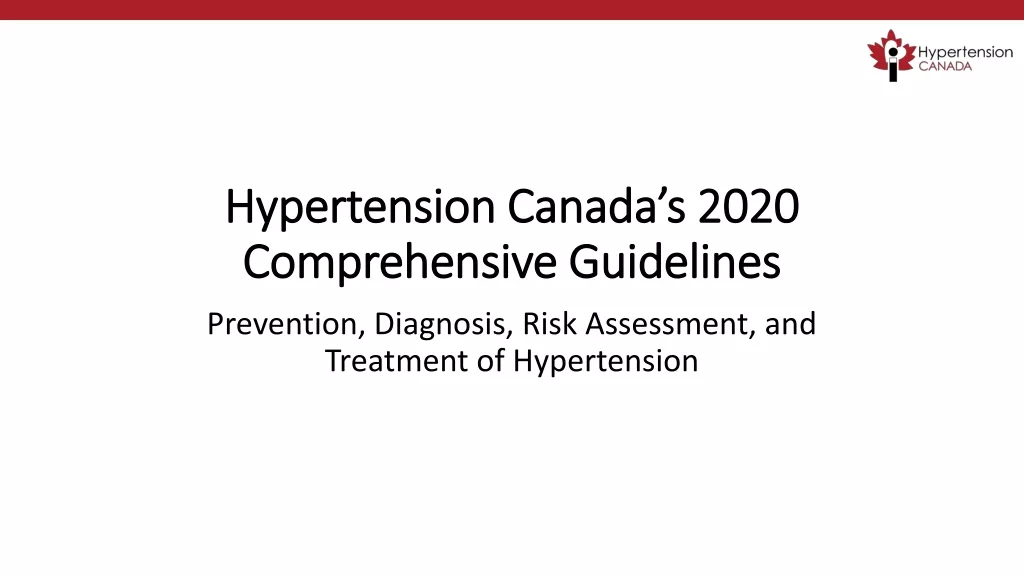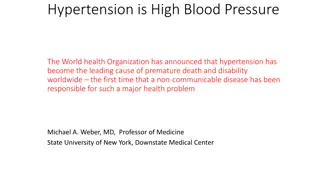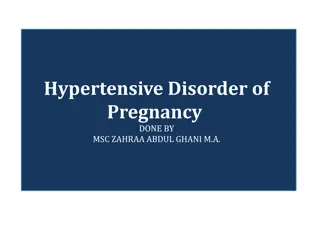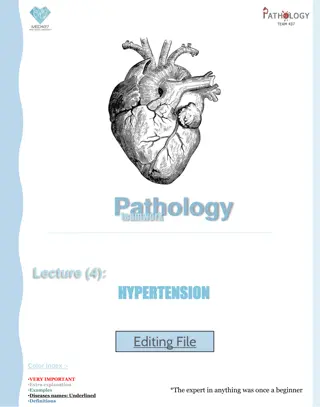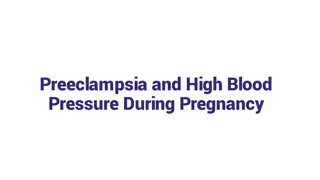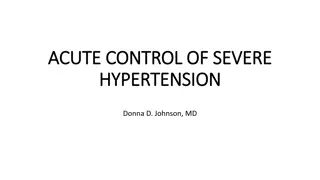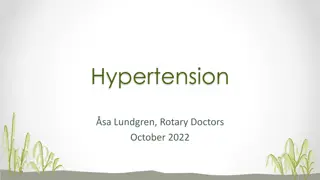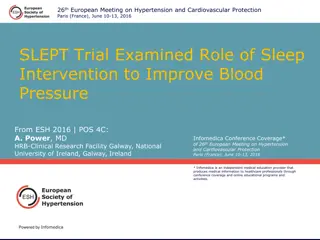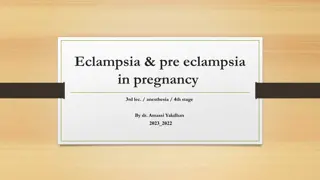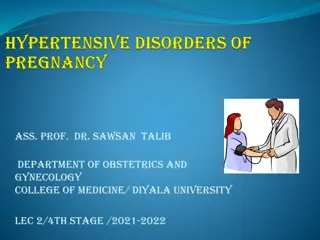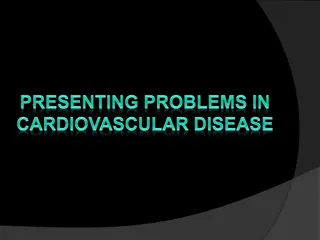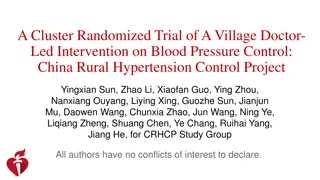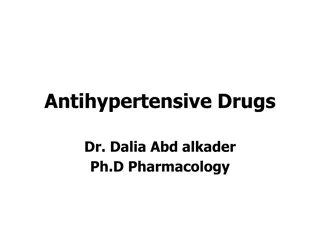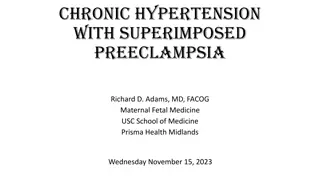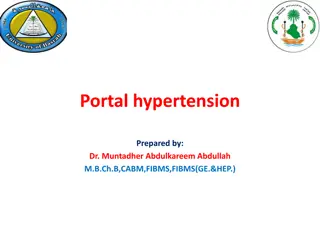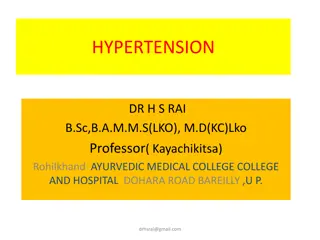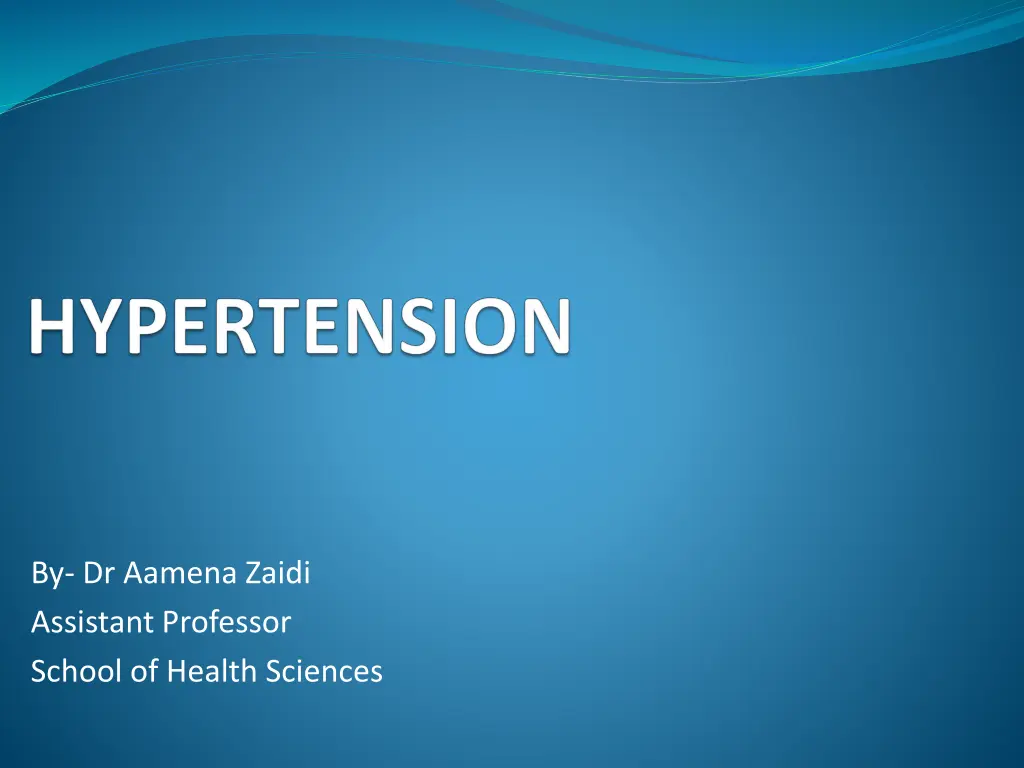
Understanding Hypertension: Causes, Symptoms, and Management
Learn about hypertension, a condition of high blood pressure, its definitions including pulmonary hypertension and secondary hypertension, signs and symptoms, common causes, and blood pressure categories. Explore how to recognize and manage this health issue effectively.
Download Presentation

Please find below an Image/Link to download the presentation.
The content on the website is provided AS IS for your information and personal use only. It may not be sold, licensed, or shared on other websites without obtaining consent from the author. If you encounter any issues during the download, it is possible that the publisher has removed the file from their server.
You are allowed to download the files provided on this website for personal or commercial use, subject to the condition that they are used lawfully. All files are the property of their respective owners.
The content on the website is provided AS IS for your information and personal use only. It may not be sold, licensed, or shared on other websites without obtaining consent from the author.
E N D
Presentation Transcript
By- Dr Aamena Zaidi Assistant Professor School of Health Sciences
What is hypertension? High blood-pressure(HBP) or hypertension means high pressure (tension) in the arteries. Normal blood pressure is below 120/80, blood pressure between 120/80 and 139/89 is called pre-hypertension , and a blood pressure of 140/90 or above is considered high. It is classified as either primary (essential) or secondary.
DEFINATIONS Pulmonary hypertension (PH) is haemodynamic and pathophysiological condition defined as mean pulmonary artery pressure >25 mmHg at rest by Right heart Catheterization (RHC). Pulmonary arterial hypertension(PAH) is a clinical condition characterized by the presence of pre-capillary PH in absence of other causes of pre-capillary PH such as PH due to lung diseases, chronic thromboembolic PH, or other rare diseases.
SECONDARY HYPERTENSION DEFINITION: - The elevation of blood pressure due to a specific underlying disorder. CAUSES(include but not limited to): - Renal Parenchymal Diseases - Primary Aldosteronism - Cushing s Syndrome - Pheochromocytoma
Signs and Symptoms Diagnosed through repeat blood pressure readings. Primary Hypertension does not have symptoms other than high blood pressure. Secondary Hypertension Most likely caused by Renal Disorders, symptoms you will see: Decreased urine formation Increased sodium and water retention
Causes Some conditions that can cause hypertension includes: Preeclampsia(a condition that occurs only during pregnancy) Tumor of the adrenal gland Kidney diseases Liver diseases Obesity Sleep apnea Acromegaly (a metabolic disorder caused by too much growth hormone) Certain medicines e.g. Birth control pills
Blood Pressure Category Systolic mmHg (upper#) Diastolic mm Hg (lower #) Normal Less than 120 and Less than 80 Prehypertension 120-139 or 80-89 High Blood Pressure (Hypertension) Stage 1 140-159 or 90-99 High Blood Pressure (Hypertension) Stage 2 160 of higher or 100 of higher Hypertensive Crisis (Emergency care needed) Higher than 180 or Higher than 110

